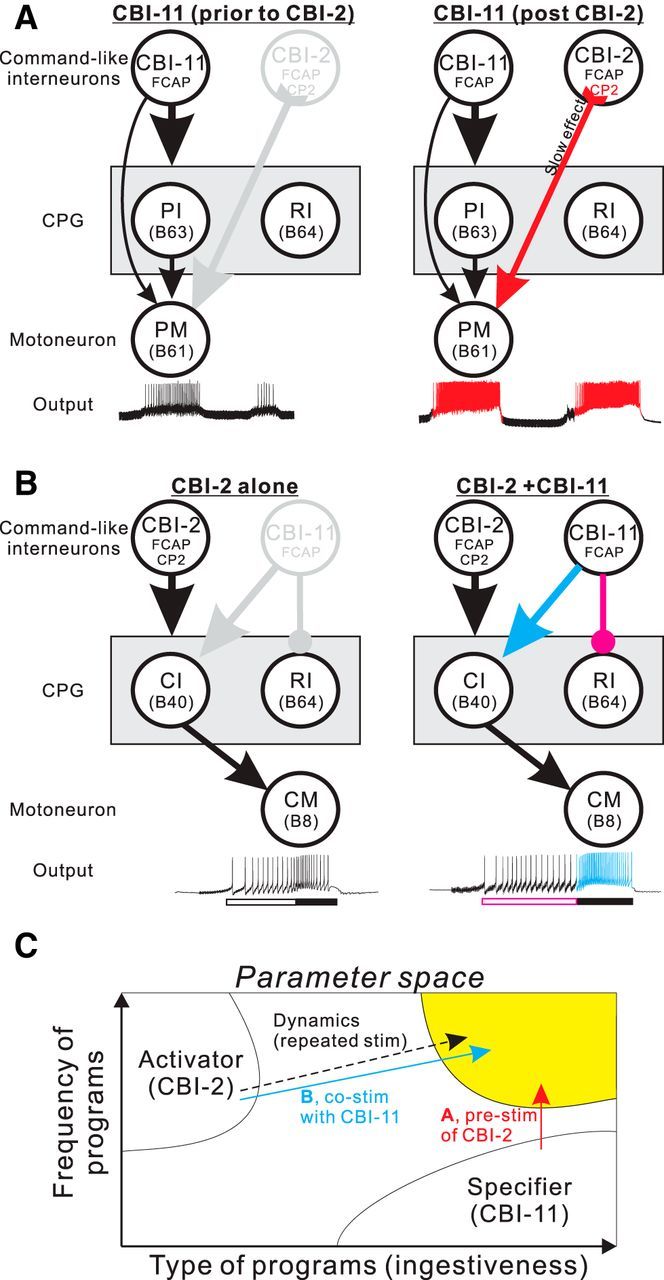Figure 11.

Schematic diagram of temporally distinct interactions between command-like interneurons CBI-2 and CBI-11. A, CBI-2 effects on CBI-11-elicited programs. Under control condition (left) CBI-11 activation elicits weak activity in the CPG, as expressed in the activity of protraction motor neuron (PM) B61. However, after prior CBI-2 stimulation (right), the CP2 that is present in CBI-2 has a persistent enhancing effect on B61 excitability, which allows CBI-11 to elicit strong CPG activity (red). PI, Protraction interneuron; RI, retraction interneuron. B, CBI-11 effects on CBI-2-elicited programs. When only CBI-2 is stimulated (left), the ingestive nature of the programs is weak, as expressed as a closure motor neuron (CM): B8 activity during retraction (filled bar) and a relatively short protraction phase (open bar). When both CBI-2 and CBI-11 are activated (right), CBI-11 promotes closure interneuron (CI): B40 activity and suppresses RI: B64 activity, thereby making programs more ingestive (blue). Protraction duration is also increased (purple). Arrows, Excitatory; circles, inhibitory. C, Parameter space illustrating the frequency of programs versus their ingestiveness. When activity in CBI-2 and CBI-11 is combined, a larger parameter space is covered. High-frequency ingestive programs can be achieved in multiple ways, such as repeated stimulation of CBI-2 (previous work) and combined activation of CBI-2 and CBI-11 (prestimulation of CBI-2; A; costimulation of CBI-11 with CBI-2; B). Stim, Stimulation.
